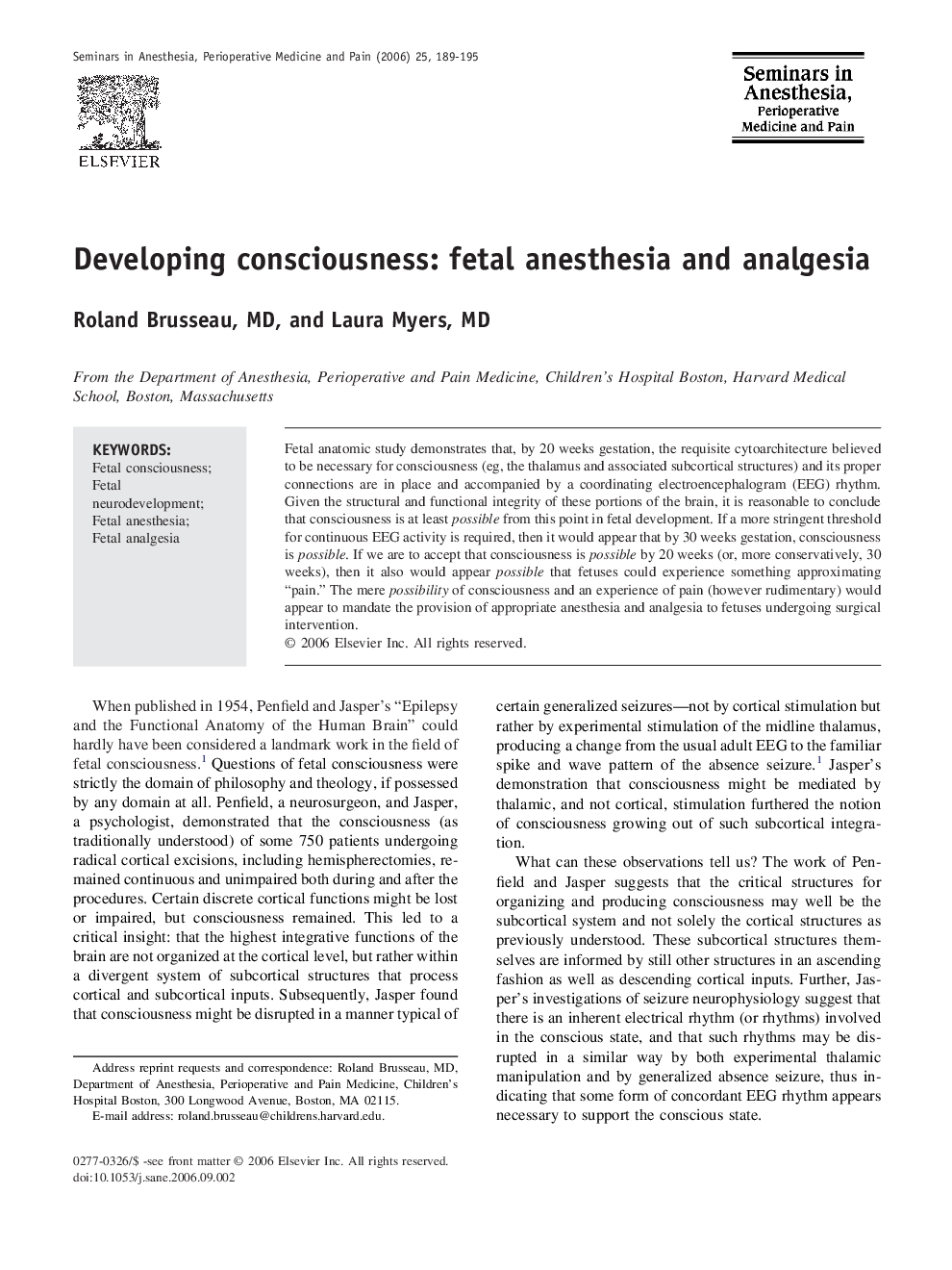| Article ID | Journal | Published Year | Pages | File Type |
|---|---|---|---|---|
| 2771206 | Seminars in Anesthesia, Perioperative Medicine and Pain | 2006 | 7 Pages |
Fetal anatomic study demonstrates that, by 20 weeks gestation, the requisite cytoarchitecture believed to be necessary for consciousness (eg, the thalamus and associated subcortical structures) and its proper connections are in place and accompanied by a coordinating electroencephalogram (EEG) rhythm. Given the structural and functional integrity of these portions of the brain, it is reasonable to conclude that consciousness is at least possible from this point in fetal development. If a more stringent threshold for continuous EEG activity is required, then it would appear that by 30 weeks gestation, consciousness is possible. If we are to accept that consciousness is possible by 20 weeks (or, more conservatively, 30 weeks), then it also would appear possible that fetuses could experience something approximating “pain.” The mere possibility of consciousness and an experience of pain (however rudimentary) would appear to mandate the provision of appropriate anesthesia and analgesia to fetuses undergoing surgical intervention.
